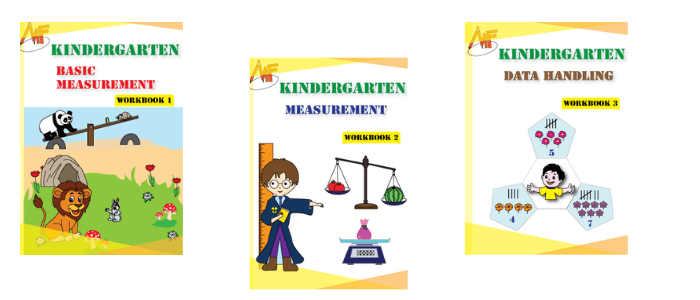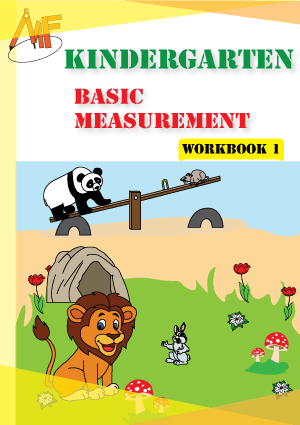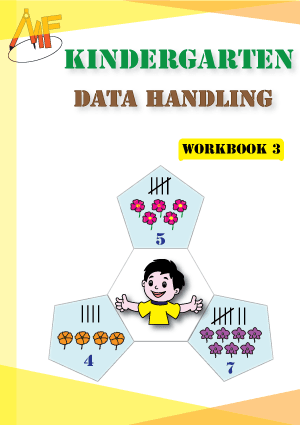Let’s learn how to measure the length and weight of objects. To begin with, we use rulers to measure the length of various items. Similarly, we can measure the weight of objects using either analog or digital scales. To make learning easier for elementary kids, this complete bundle includes all the tools and resources needed for measuring both length and weight.
- Home
- Kindergarten Measurement Workbooks
Categories
- Algebra
- Square and Cube Root Worksheets
- Least Common Factor Worksheets
- Greatest Common Factor Worksheets
- Evaluating Functions Worksheets
- Free Trigonometric Ratio Worksheets
- Download Radicals Worksheets
- Download Domain and Range Worksheets
- Identifying Functions Worksheets
- Download Function Table Worksheets
- Polynomials – Box method
- Dividing Polynomials Worksheets
- Multiplying Polynomials
- Subtracting Polynomials
- Adding Polynomials Worksheets
- Classifying Polynomials
- Proportion Worksheets
- Trigonometric Charts
- Quadrants Worksheets
- Roots of Quadratic Equation
- Solving Quadratic Equation Worksheets
- Multi Step Equation Worksheets
- Two Step Equation Worksheets
- One Step Equation Worksheets
- Identifying Polynomials Worksheets
- Evaluate Algebraic Expressions
- Understanding Algebraic Expressions
- Scientific Notation Worksheets
- Order of Operations
- Simplifying Algebraic Expressions
- Graphing Lines
- Point Slope Form Worksheets
- Two Point Form Worksheets
- Ratio Worksheets
- Two Intercept Form
- Data Handling
- Days Months and Seasons Worksheets
- Division Word Problems
- English Worksheets
- 1st Grade Reading Comprehension
- Days, Months and Seasons Worksheets
- Spelling Worksheets
- Prefixes and Suffixes Worksheets
- Homonyms Worksheets
- Plurals Worksheets
- Synonyms and Antonyms Worksheets
- Practice Words Worksheets
- Syllables Worksheets
- R-Controlled Vowels Worksheets
- Rhyming Words Worksheets
- Digraphs and Trigraphs Worksheets
- Consonants Worksheets
- Vowels Worksheets
- Consonant Blends Worksheets
- Phonics Worksheets
- Describing Birds Flash Cards
- Download Describing Flowers Worksheets
- Describing Vegetables
- Describing Fruits
- Describing Animals Worksheets
- Reading Comprehension Worksheets
- Cursive Writing
- Alphabet Worksheets
- Geometry
- Trapezoid Worksheets
- Properties of Shapes Worksheets
- Factors and Multiples
- Measuring Angles
- Types of Angles
- Pair of Angles
- Naming Angles Worksheets
- Composing and Decomposing Shapes
- Angles in Triangles
- Triangle Inequality Theorem
- Medians and Centroid of a triangle
- Pythagorean Theorem
- Perimeter of Triangles
- Types of Triangles
- Area of Triangles
- Circumference of Circles
- Area of Circles
- Perimeter of Rectangles
- Area of Rectangle
- Identifying Rectangles
- Perimeter of Squares
- Area of Squares
- Identifying Quadrilaterals
- Area of Quadrilaterals
- Perimeter of Quadrilaterals
- Slope Worksheets
- Distance Worksheets
- Midpoint Formula
- Kite Worksheets
- Parallelogram Worksheets
- Lines, Rays, Line Segments and Planes
- Symmetry Worksheets
- 3D Shapes Worksheets
- 2D Shapes Worksheets
- Complementary and Supplementary Angles
- Kids Corner
- Kindergarten Physical Science Worksheets
- Earth and Space Science Worksheets
- Living Things
- Veteran’s Day Worksheets
- Valentine’s Day Worksheets
- Thanksgiving Day Worksheets
- Labor Day Worksheets
- Saint Patrick’s Day Worksheets
- Memorial Day Worksheets
- Martin Luther King Worksheets
- Halloween Worksheets
- Columbus Day Worksheets
- New Year Worksheets
- Christmas Worksheets
- Easter Worksheets
- Matching Activity
- Connecting Dots
- Tracing and Coloring
- Coloring Activity
- Cartoon Coloring
- Number Names Charts
- Number Charts
- Standard Charts
- Alphabet Worksheets
- Measurement
- Multiplication Word Problems
- Numbers & Operations
- Division Word Problems
- Decimal Multiplication
- Multiplication Word Problems
- Subtraction Word Problems
- Percent Worksheets
- Multiplication Activities Worksheets for Kids
- Picture Multiplication
- Number Multiplication - Horizontal
- Number Multiplication – Vertical
- Multiplication Tables
- Subtraction – Problems Ending With Zero
- Subtraction Activities
- Picture Subtraction
- Number Subtraction – Horizontal
- Number Subtraction – Vertical
- Subtraction Tables
- Division Activities
- Number Division – Horizontal
- Long Division With Remainder
- Long Division without Remainder
- Division Tables
- Estimation of Time and Money
- Position Worksheets
- Comparing Numbers
- Decimal Place Value Worksheets
- 6-Digit Place Value Worksheets
- 5-Digit Place Value Worksheets
- 4 Digit Place Value Worksheets
- 3-Digit Place Value Worksheets
- 2 Digit Place Value Worksheets
- Patterns Worksheets
- Types of fractions
- Multiplying and Dividing Fractions
- Comparing and Ordering Fractions
- Fraction Subtraction
- Fraction Addition
- Representing fractions
- Exponents Worksheets
- 3 Addends Addition
- Ordering Numbers Worksheets
- Estimation of Numbers
- Page Template
- Addition Activities
- Picture Addition Worksheets
- Rounding Numbers
- Cardinal & Ordinal Numbers
- Odd and Even Numbers
- Skip Counting Worksheets
- Roman Numerals Worksheets
- Decimal Subtraction
- Decimal Addition
- Prime and Composite Numbers
- Squares and Cubes of Numbers
- Horizontal Number Addition
- Divisibility Rules Worksheets
- Counting & Cardinality
- Addition Tables
- Subtraction Word Problems
- Word Problems
Free Printable Kindergarten Measurement Workbooks
Kindergarten measurement workbooks introduce young learners to important math concepts in a fun and engaging way. These workbooks help children understand size, length, height, weight, and volume through simple, hands-on activities. With colorful visuals and interactive exercises, kids learn to compare and measure using everyday objects.
Each page offers a focused activity. Children practice skills like measuring with non-standard units, identifying big vs. small, and using comparison words like taller, shorter, heavier, and lighter. These measurement worksheets for kindergarten are ideal for both classroom and home use. They make learning math exciting and easy to grasp.
In addition, printable measurement worksheets give parents and teachers flexible learning tools. You can use them during lessons, as homework, or for extra practice. These early math workbooks support key skills that prepare children for more advanced math topics. Plus, they encourage independent thinking and problem-solving.
Please refer below mentioned worksheets also:
Download Kindergarten Measurement Workbooks
Workbook #1
Big vs Small worksheets, Heavy vs Light worksheets, Tall vs Short worksheets, Long vs Short worksheets, and More vs Less worksheets are included in this workbook. Through these activities, kids actively learn to identify and compare objects based on their size. As a result, they develop a clear understanding of basic measurement concepts in a fun and interactive way.
Workbook #3
Tally marks use a simple form of the unary numeral system to make counting easy. In this method, we first draw four vertical lines one after the other. Then, to represent the fifth count, we draw a diagonal line across the previous four. As a result, tally marks provide a quick and clear way to record and represent information.
Moreover, these educational workbooks for kindergarten strengthen observation and reasoning skills. As kids complete fun tasks like sorting objects by size or using rulers and blocks to measure, they build real-world math understanding. This approach makes abstract concepts more concrete and relatable.
Transitioning from basic counting to applying math in everyday situations is an important step. That’s why kindergarten math measurement activities are so valuable. They bridge the gap between number knowledge and real-life application.
Whether you’re teaching in a classroom or working one-on-one at home, measurement workbooks for kids offer structure and creativity. They’re aligned with early learning standards and perfect for hands-on math lessons.
In conclusion, kindergarten measurement worksheets are essential for building early math confidence. With consistent practice and fun challenges, children develop a love for learning math. Choose workbooks that make measuring easy, interactive, and rewarding.




